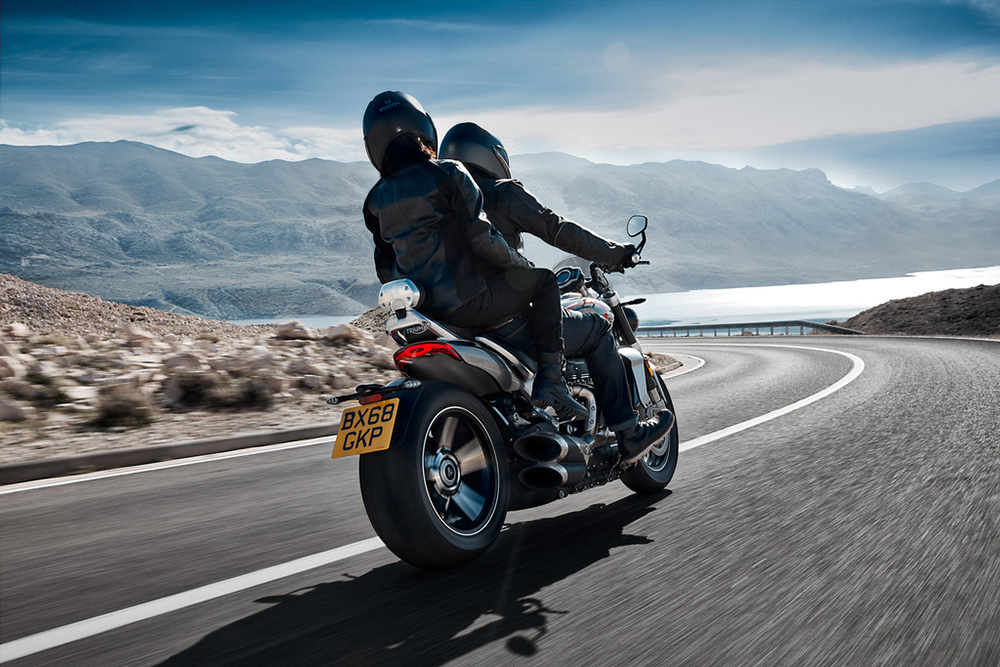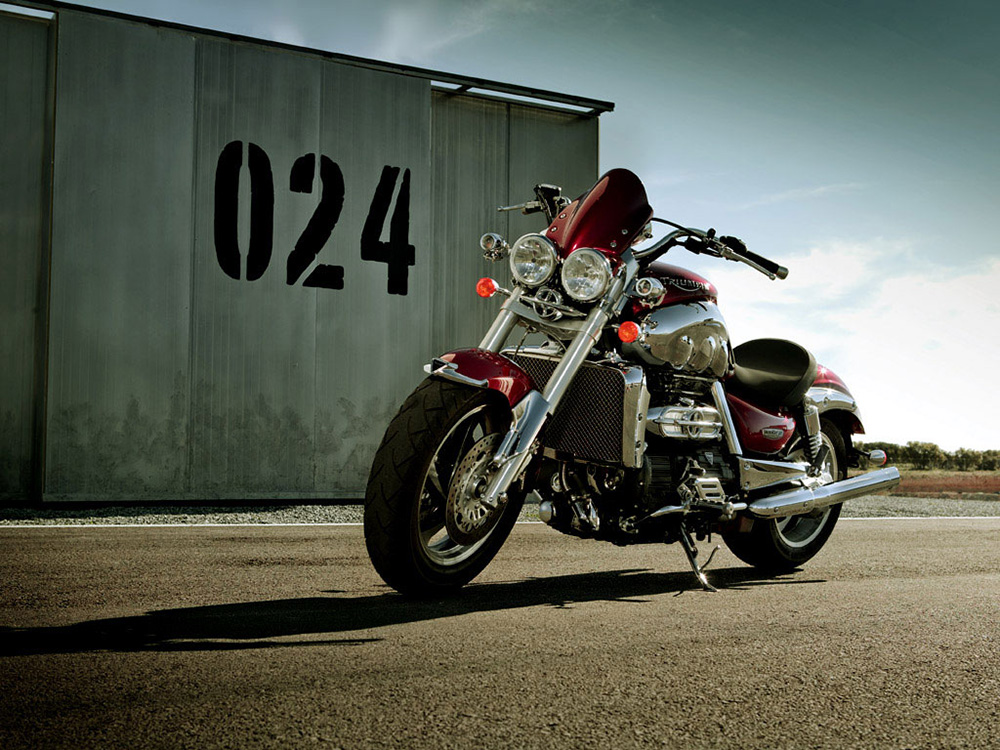For a conservative and distinctly British company like Triumph, the Rocket III was quite a departure when it was introduced in 2004.
The revived firm was still a relatively small player in the global motorcycle landscape at the time but had big ambitions to crack the lucrative US market. The recently introduced Hinckley Bonnevilles gave the brand a modern classic offering for riders looking for a more traditional motorbike, but to really crack the American market the company needed something a bit different – a big cruiser to meet the needs of the American biker. The Rocket III was the answer to the question Triumph asked itself.
Originally the plan was to build a big capacity cruiser, the kind of motorcycle that was so popular with American riders at the time. In a world where there was ‘no replacement for displacement’ Triumph went big, very big.
Rumour had it that the original design brief was for a 1500cc three-cylinder power cruiser, a capacity in line with the competition of the time. Harleys were typically running a 1450cc version of its classic pushrod V-twin engine, while Japanese manufacturers’ cruisers were even bigger. Kawasaki and Suzuki made 1500cc Harley clones, but the trend was for bigger, torquier and more powerful motors. Yamaha introduced its 1670cc Road Star and Honda was wheeling out it’s 1.8 litre flat six engine from the Goldwing, the only non V-twin engine in the category, for its Valkyrie and Rune. Power cruisers, although not massive sellers, grabbed headlines – and in a very un-Triumph way (at the time, at least) the Triumph Rocket III would trump them all.
By the time it made it to production, the Rocket III had a gargantuan 2294cc engine at its heart, more than double that found in Harley’s V-Rod muscle bike. Delivering just under 150bhp (and more significantly 221Nm of torque) the Rocket III was the power cruiser to top all power cruisers.
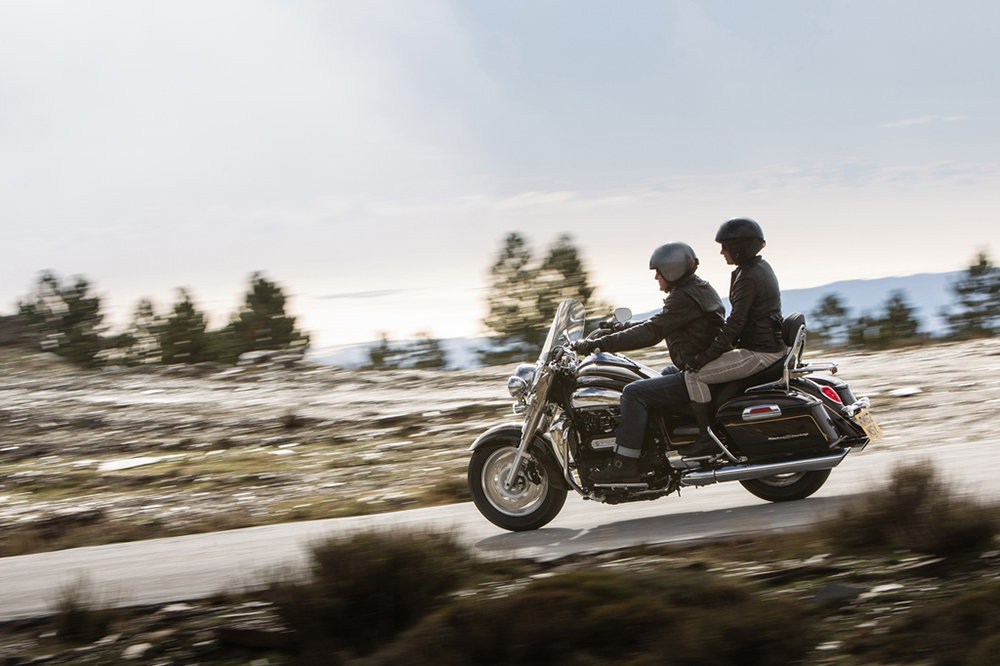
And it was a brute. Weighing in at 362kg, the Rocket III was a big beast of a machine. For such an understated organisation, it was a monumental departure. Triumph weren’t shy to boast about the Rocket’s numbers. The 101.6mm bore was as big as Triumph could make using their CNC machines, and they played on the fact that the Rocket III’s pistons were the same size as those found on a Dodge Viper V10 supercar, as well as the 240-section rear tyre, which was the biggest found on a production motorcycle. The design emphasised the Rocket III’s attributes, with the three exhaust header pipes proudly used as a design element on the longitudinally mounted three-cylinder engine, while the bug eyed headlights kept the family link with the popular Speed Triple.
The Rocket III broke some Triumph naming conventions too. Typically modern Triumphs used names recycled from previous glories: Trident, Tiger, Daytona et al had all been nameplates from the days when British bikes ruled the world, but ‘Rocket’ had been lifted from another bike from the era – one which wasn’t really a Triumph.
Although the BSA Rocket 3 was actually kind of a Triumph. Back in 1968, BSA and Triumph were under the same ownership. A 750cc three-cylinder engine was produced and formed the basis of the first Triumph Trident, while the BSA version was called the Rocket 3. The bikes enjoyed a small amount of racing success but a lack of investment and a new generation of Japanese sportsbikes meant that the triples were not the saviours of the British motorcycle industry it was hoped to be. The BSA name disappeared in 1973, while Triumph struggled on for a decade more – eventually going bankrupt and rights to the brand being bought by businessman John Bloor.
The Rocket III was a relative success. It immediately sold out and Motorcycle News even named it their Bike of the Year for 2004. It didn’t manage to get too many loyal Harley owners off their HOGs, but it played an important role in turning Triumph from the niche company of 20 years ago to one of Europe’s biggest motorcycle manufacturers. Along with more mainstream new models like the Daytona 675 and Street Triple, the Rocket was able to generate headlines and back them up on the road.
Understandably the Rocket III wasn’t a bike for everyone, but those who loved them did so with a passion. It was a big bike beloved of big bikers, although it wasn’t quite as intimidating as the numbers might suggest.
The big motor pulled like a train from nothing and the cruiser ergonomics made it accessible to shorter riders to a degree. The seat height was just 790mm, although the wide saddle did mean that the rider’s legs were splayed in a somewhat exaggerated way – creating more of a stretch than the spec sheet suggested. It was, in many ways, a rather crude device but that was part of the appeal. The transmission, a five-speed gearbox linked to a shaft drive, was in particular somewhat agricultural but, with unparalleled levels of torque, gearchanges were infrequent anyway.
Explaining the concept of the Rocket III, Triumph’s Chief Engineer Stuart Wood, who was a member of the original project team, said: “There was a need to find a new generation of bikes to grow our presence in the American market, so our vision was to build a bike with such unique character and an even more interesting three-cylinder engine for US customers. Taking on board what our existing customer base told us and what we wanted as an engineering team, the result was a power cruiser that is individual, iconic and has stood the test of time.”
Triumph expanded the Rocket III family with the Rocket III Classic in 2006. More or less the same bike underneath, it featured lashings of additional chrome and more traditional custom bike touches like footboards and pull back handlebars. A year later the Touring version emerged. Designed to take on the American baggers, it was a significantly different motorcycle with a completely new frame and a modified engine, which was detuned but a little more refined. At 395kg, the Touring was heavier still and never really found its audience, disappearing from the range after a few years.
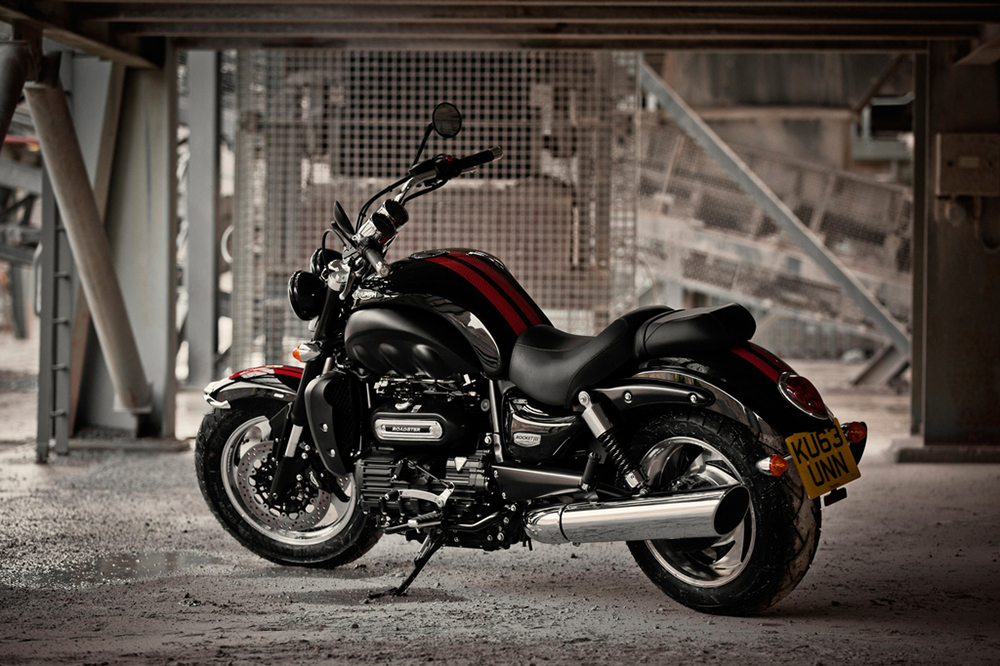
An updated model, the Rocket III Roadster, replaced the original and Classic in 2010. Power was boosted by around 9bhp and the ergonomics were more roadster and less cruiser. With a more stripped back and blacked out look, it was more contemporary in its design and a little more refined (especially in the transmission department) but underneath still lay a rather crude design. It was probably not enough of an upgrade to convince many existing owners to trade in their original bikes, let alone attract new buyers, but it remained on sale until 2017, when Euro 4 rules kicked in.
That was the last we’d seen of the Triumph Rocket III, or so we thought.
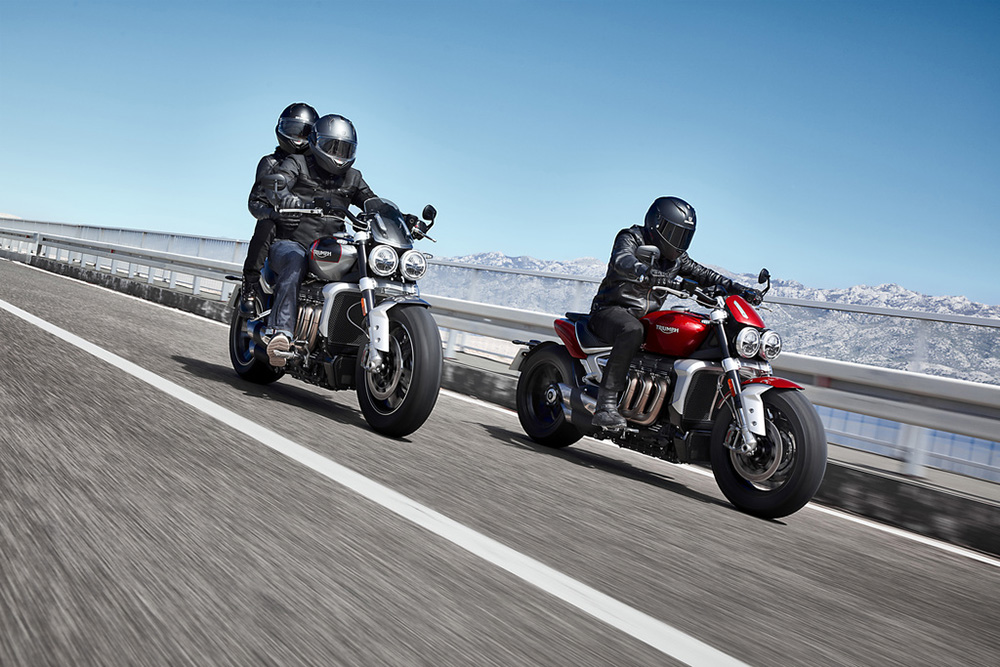
The company brought in a more-or-less all-new bike, now dubbed the Rocket 3, in 2019. The engine, based on the original block, now features a staggering 110.2mm bore to take the capacity out to 2,458cc, with power up to 165bhp and torque remaining at 221Nm at just 4000rpm. The Rocket 3 remains the torquiest internal combustion powered motorcycle today and although it remains a brute, the latest iteration features modern electronics and technology, not to mention a more stripped back and aggressive look.
There are two versions of the latest Rocket, designated R and GT, the GT being lower and more touring orientated. Triumph claim a 0-60mph time of just 2.73 seconds for the latest generation bike, which now enjoys features like traction control, rider modes and cornering ABS. Suspension is modern, adjustable, kit from Showa with Brembo supplying the brakes and detailing is top notch, in line with all new Triumphs.
As an added bonus, anyone buying a new Rocket 3 between now and the end of March will receive a special ’20 years of Rocket’ gift pack, which includes a customised Wingback pen engraved with the bike’s unique 17-digit VIN number.
